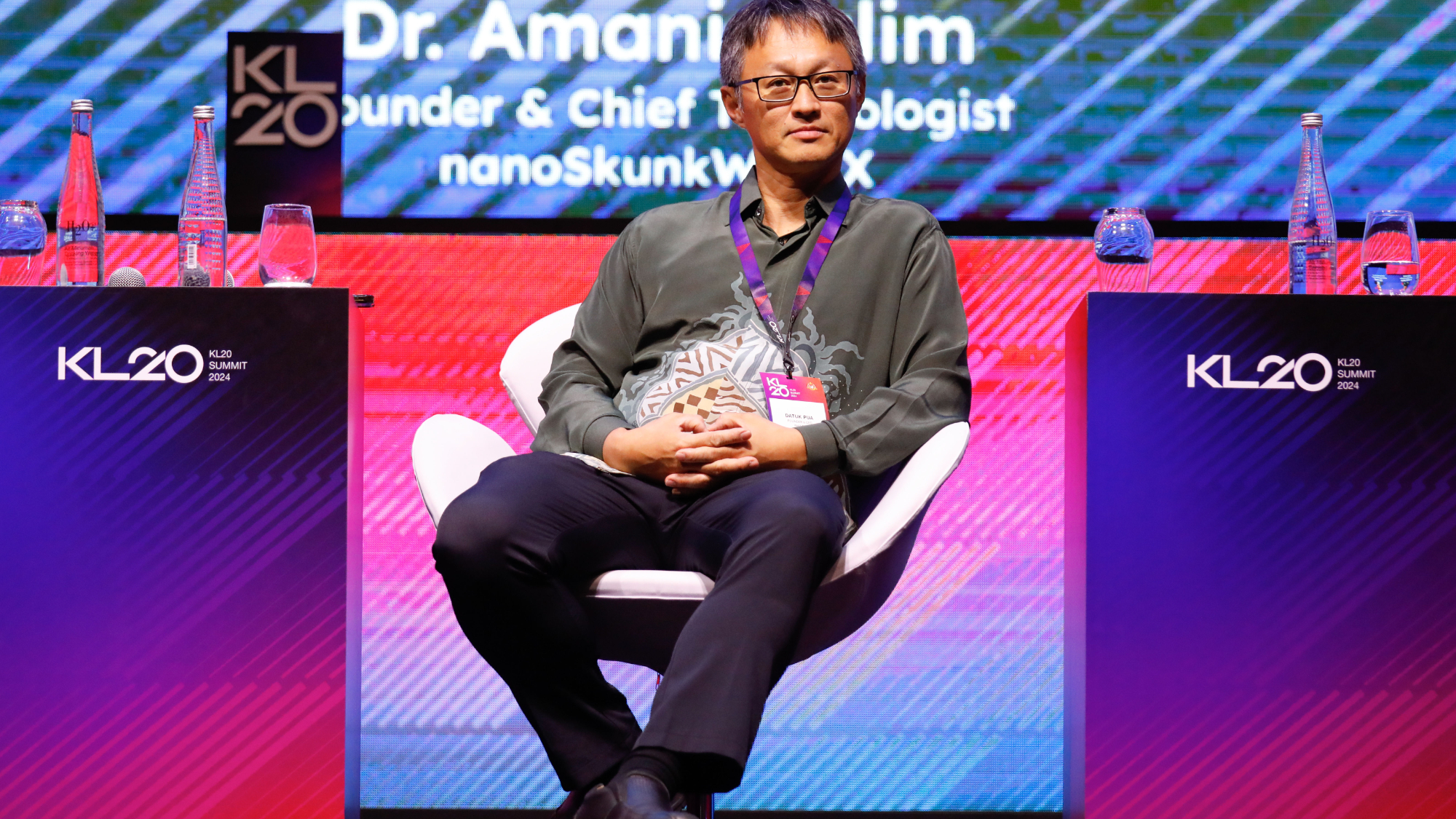Phison CEO claims NAND shortage could last a staggering 10 years — says memory 'supercycle' imminent and 'severe' 2026 shortages are at hand
AI profits are changing the landscape of storage and memory, perhaps fundamentally

The implications of the AI data center boom continue to mount ever higher by the day. Pua Khein-Seng, CEO of Phison Electronics Corporation, claimed in a recent interview that NAND flash shortages forecasted to arrive in 2026 will linger for the next ten years. The estimate from the Phison boss long outstretches the current estimates of a one-year storage squeeze from other industry insiders.
In an interview with Taiwanese CommonWealth Magazine's tech column, Pua reaffirms and increases the expectations of market analysts who claim that a "supercycle" is imminent for the memory world. "NAND will face severe shortages next year. I think supply will be tight for the next ten years," says Pua.
"In the past, every time flash makers invested more, prices collapsed, and they never recouped their investments. So companies slowed spending starting around 2019–2020. Then in 2023, Micron and SK Hynix redirected huge CapEx into HBM because the margins were so attractive, leaving even less investment for flash."
As flash demand and pricing fell for the last few years, it is now seeing a major boom, resulting in some monumental wins across the memory market. As TrendForce reported in September, SanDisk, Micron, and Western Digital all announced price freezes or hikes across their flash portfolios as demand swelled to "unprecedented" levels.
As with most hardware trends in the last few years, the culprit for this demand is the AI data center boom. Storage demands have seen huge spikes in recent days, as more companies are pivoting to prioritizing inferencing LLMs over just training workloads, and nearline storage needs have increased. Nearline storage, a sort of "warm" storage that exists between hot and cold storage uses, is increasingly necessary as AI models grow in size and the data needs of corporations rise, useful for storing past revisions of models to retrain on, holding old queries, or hosting seldom-accessed user data.
While DRAM-based HBM memory has been the prime cut for AI buyers hungry for training power, Pua claims flash will soon outpace it in necessity. "Since 2022, cloud companies have been scrambling to secure GPUs, mainly to train models. Training uses HBM and has little to do with flash. Now those models appear to have matured. After burning through so much capital, how will cloud companies make money back? Through inference.
"In my view, those multi-billion-dollar capex plans by cloud providers won’t be entirely bet on GPUs; an even greater share will go into storage. To make money, you need users. Users create data. Data needs to be stored. Which means data centers must expand storage for the next decade. After all, a data center’s core function is storage."
Get Tom's Hardware's best news and in-depth reviews, straight to your inbox.
The industry is also starting to bet against the future of HDDs. While hard drives are currently priced at attractive levels for high-capacity nearline storage use, SSD prices are expected to match those of HDDs in the next five to eight years. Add to that the fact that HDD lead-times are up to over a year out from some providers, and flash SSDs will surely become the standard buying choice all across the industry for bulk storage needs, says Pua.
"In 2020, the SSD-to-HDD ratio in data centers was in the single digits versus more than 90%. Today, it’s about 20% to 80%. Looking ahead, SSDs will account for 80% to 100%. The real question is: how much new capacity will be needed to support that transition? That’s why I say flash will remain strong for the next ten years."
As SSD capacities continue to grow in size and shrink in cost, and the biggest AI buyers move towards prioritizing storage over the HBM-memory-centric GPU arms race, Pua's words may prove prophetic. U.S. bank Morgan Stanley has begun tipping its clients off to the same upcoming "memory supercycle", helped along by a continued need for HBM and China's threat to enter the HBM market in the next two years. The full interview with Pua Khein-Seng continues to focus on this competitive market and its implications for the ten-year prediction.
Follow Tom's Hardware on Google News, or add us as a preferred source, to get our up-to-date news, analysis, and reviews in your feeds. Make sure to click the Follow button!

Sunny Grimm is a contributing writer for Tom's Hardware. He has been building and breaking computers since 2017, serving as the resident youngster at Tom's. From APUs to RGB, Sunny has a handle on all the latest tech news.
-
DS426 Computer hardware squeezes, electric grid squeezes, ... those squeezes will lead to the AI bubble pop before long, right?Reply -
urn66 Don't panic! China will solve this problem. It already solved the power demand issue and is working on the Processor/CUDA-jailbreak thingy, more Flash is a simpler problem.Reply -
LordVile Reply
How have they solved this when they’re buying the same power hungry GPUs as everyone else?urn66 said:Don't panic! China will solve this problem. It already solved the power demand issue and is working on the Processor/CUDA-jailbreak thingy, more Flash is a simpler problem. -
bit_user Reply
Yeah, 10 years is a long way out to predict anything. Such a prediction necessarily builds in some assumptions about continued growth in the AI sector. A big crash, in that market, would prove to be hugely disruptive and big price-drops in memory (of all modern kinds, probably) would be one consequence.QuarterSwede said:Excellent article. This makes total sense. We’ll see it pans out. -
urn66 Reply
China is leading the world in electrification and clean energy generation, with continued investment and innovation in both sides of the demand/supply equation. China in scaling pv. wind, hydro and nuclear in parallel. Recent US Tech visitors to China walked-away with the same conclusion.LordVile said:How have they solved this when they’re buying the same power hungry GPUs as everyone else?
AI experts return from China stunned: The U.S. grid is so weak, the race may already be over
AI experts warn that China is miles ahead of the US in electricity generation — lack of supply and infrastructure threatens the US’s long-term AI plans
USA vs China Power Generation -
bit_user Reply
They're also building new coal-fired power plants, at a brisk pace.urn66 said:China is leading the world in electrification and clean energy generation,
https://www.carbonbrief.org/chinas-construction-of-new-coal-power-plants-reached-10-year-high-in-2024/ -
KennyRedSocks ReplySSD prices are expected to match those of HDDs in the next five to eight years.
I'll believe it when I see it. -
bit_user Reply
Yeah, but HDDs really seem to have hit a wall on capacity increases, within the past 5+ years. The transition to HAMR seemed to go a lot slower than expected. Hopefully, it'll be smooth scaling again, for at least a little while.KennyRedSocks said:I'll believe it when I see it.
Whether they can keep ahead of NAND really depends on whether they can make the next technology transition more smoothly. I forget whether that's bit-patterned media or what.
On the NAND side, scaling slowed simply because it's getting harder to pack more bits in a cell. That's one of the factors that really helped propel NAND capacity increases from about 2010 to 2020 - the transition from 1 bit per cell to 4. The other big game changer was 3D NAND. But, now everyone has made those transitions and so we're back to simple 2D scaling and adding more layers. I think layer increases don't do much to improve cost-effectiveness of NAND, however. -
urn66 Reply
These are replacement for aging plants and not designed for base-load capacity. In fact, the utilization of coal generated power in China is declining and CO2 emissions that peaked in 2024 are now declining. The coal power fractions will continue to decline as increases in total lower shift predominantly to clean energy. It is a complex issue, but bottom line is that China is reducing dependance on fossil fuels as it scales total power to meet the increasing demand of electrification - research this and you will get a better picture. Here is a start:bit_user said:They're also building new coal-fired power plants, at a brisk pace.
https://www.carbonbrief.org/chinas-construction-of-new-coal-power-plants-reached-10-year-high-in-2024/
Ember: China Energy Transition Review 2025